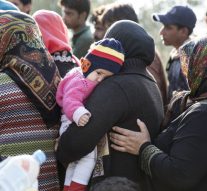
Commission’s Communication on the protection of children in migration
Migration 24 April 2017On 12 April 2017, the European Commission publlished a long awaited set of policy guidelines to reinforce the protection of migrant children at all stages of the processes that concern them. First announced in the European Agenda on Migration (May 2015), this Communication has been central in the advocacy work of key NGOs and international organisations for months, who stressed the importance of setting a framework of actions and standard ensuring a coordinated and more efficient approach not only to the protection of migrant children, but also to the respect of their rights.
The measures – which address the gaps that have let many children to fall through the cracks, or left them at risk of abuse and exploitation – focus on all children, whether they are migrants or refugees, arriving with their families or on their own. These include providing access to safe reception facilities, services like education and health care, and finding long-term solutions that are in the best interest of the child.
Commissioner for Migration, Home Affairs and Citizenship Dimitris Avramopoulos said: “One in three asylum seekers in Europe is a child. Children are the most vulnerable migrants and ensuring their protection from the moment they leave their home countries should be mainstreamed in our migration policy. This means that we need a comprehensive and stepped-up response. Today we propose concrete actions to support our Member States in addressing the needs of all children at all stages of migration: to improve the identification of children, to train involved personnel, to step up relocation, but also to ensure swift family tracing in countries of origin and measures to enhance early integration. Both the Commission and our EU agencies stand ready to move forward to implement these actions.”
Agencies are now calling on the EU to transform their words into action to ensure that children – who made up 30 per cent of all asylum applications in Europe in 2015 and 2016 – do not fall prey to abuse or exploitation upon their arrival in Europe.
Ester Asin, Director of Save the Children’s Brussels office said: “Through our work on the ground, we see the terrible conditions migrant and refugee children face when they arrive in Europe. The lack of proper reception facilities often pushes children into the hands of people smugglers and traffickers. On the Greek islands – where thousands of children have been held in detention-like conditions since the implementation of the EU-Turkey deal over a year ago – we have seen a rise in self-harm, substance abuse, anxiety and depression among children. This communication promises there will be much-needed investment to hire and train staff dedicated to child protection. We urge the EU to ensure this has an immediate impact on the children who are stuck in limbo and losing hope for their futures.”
Delphine Moralis, Secretary General at Missing Children Europe, said: “Over 10,000 children went missing after reaching Europe last year due to inadequate protection. We have little knowledge of what happens to them, why they go missing, and what risks they are exposed to. But we do know that many of them are traumatised and desperate to reach family members living in Europe, find safety and go to school. A European guardianship network, better data collection, better training and more cooperation between member states would help ensure fewer children disappear under the radar. Migrant children should not be treated differently to children from host countries. We hope that the EU and member states will ensure they receive equal protection.”


